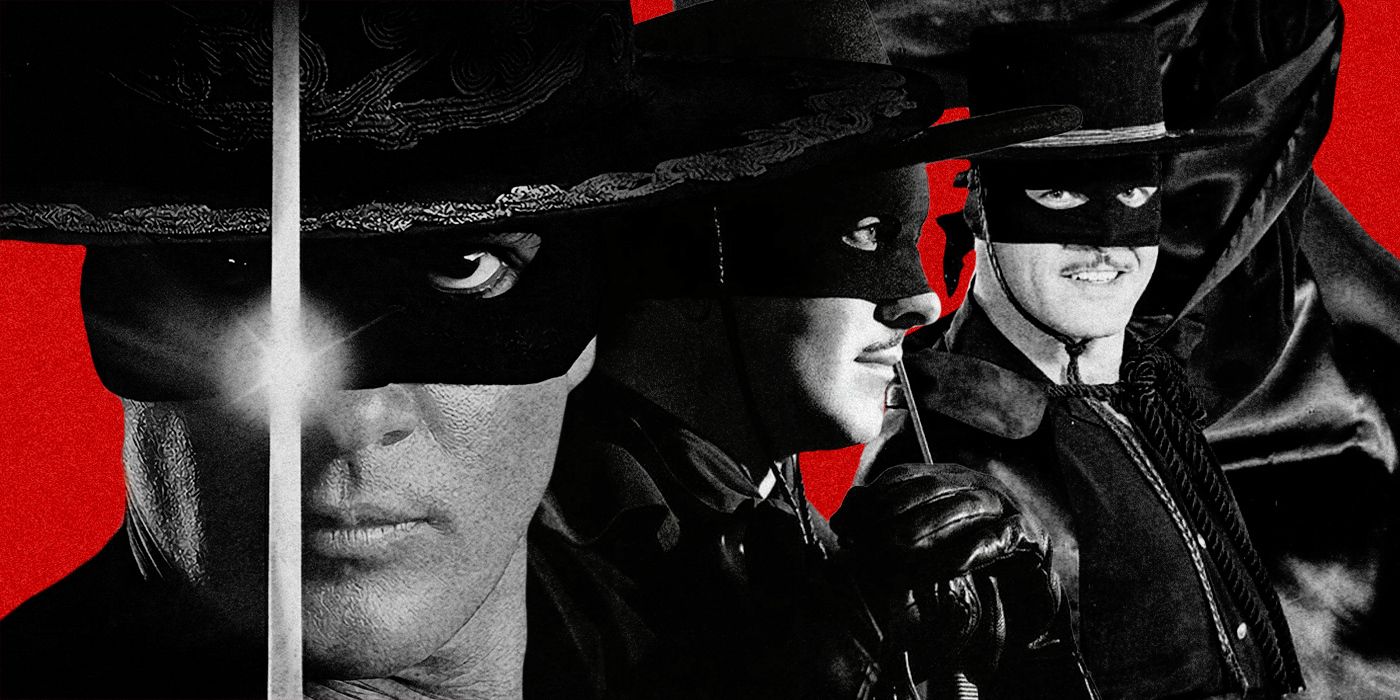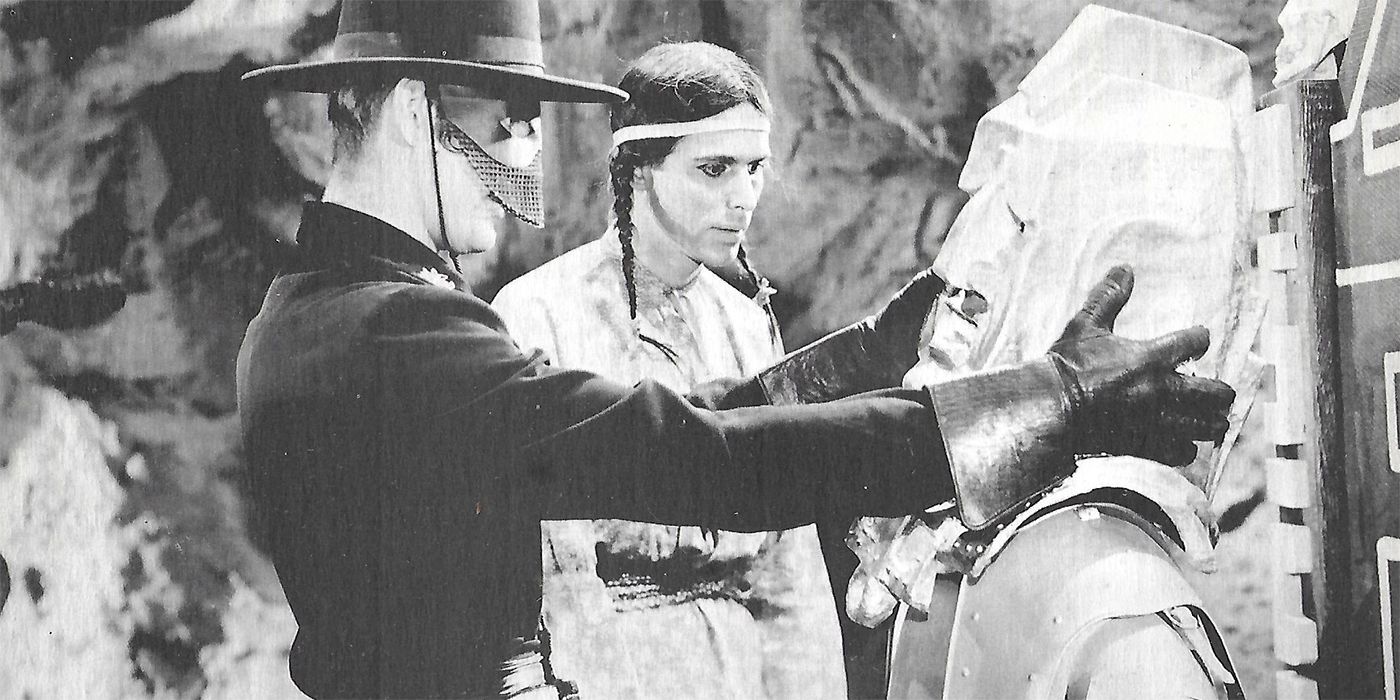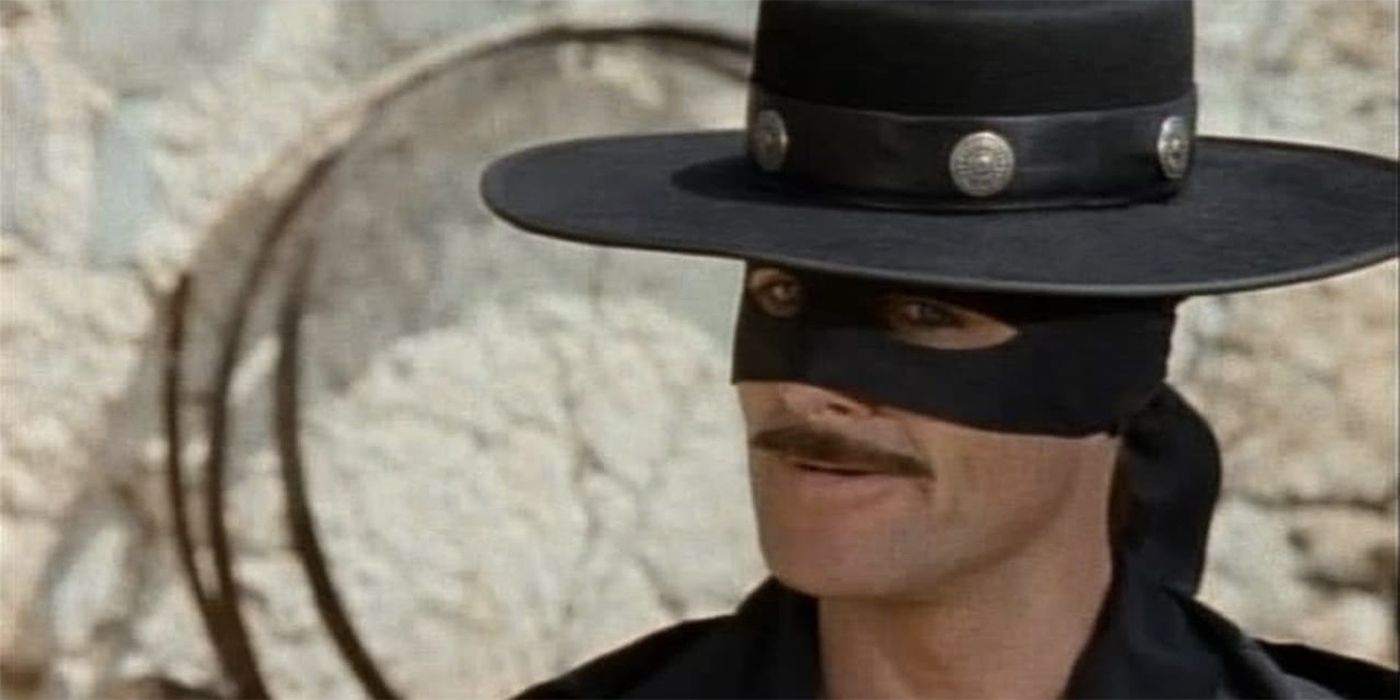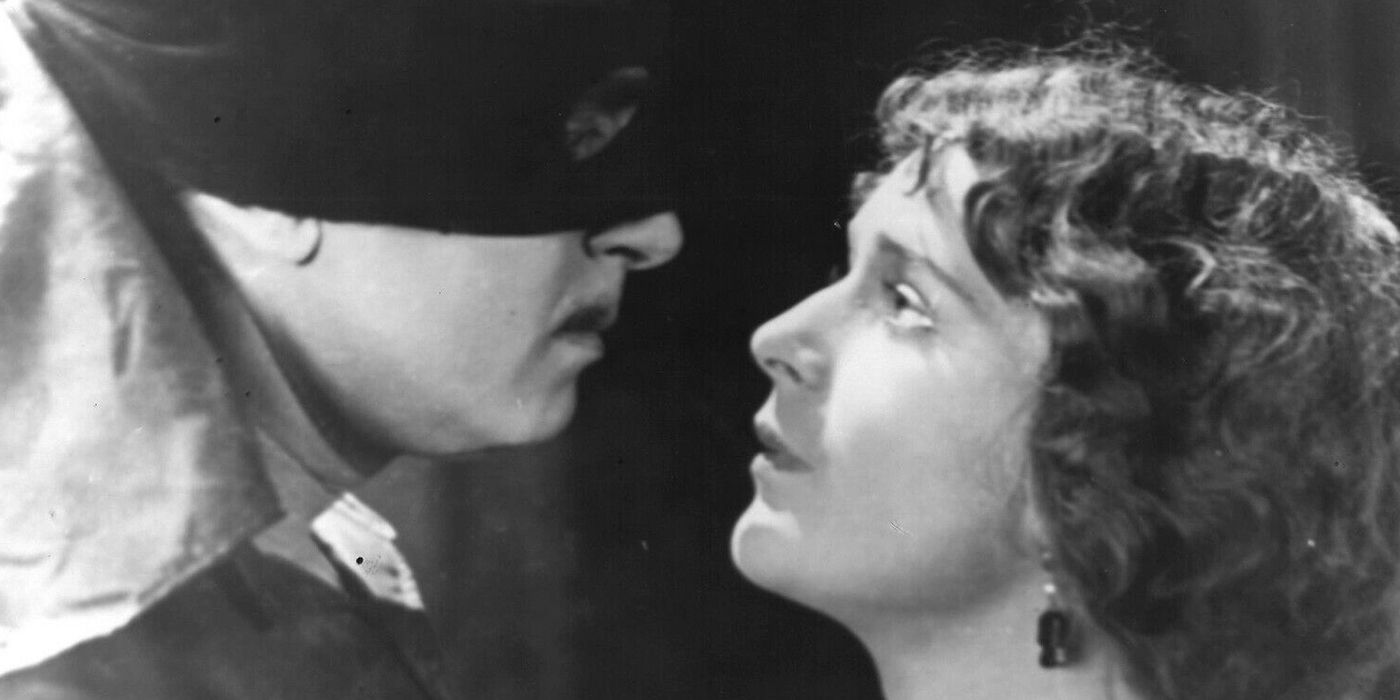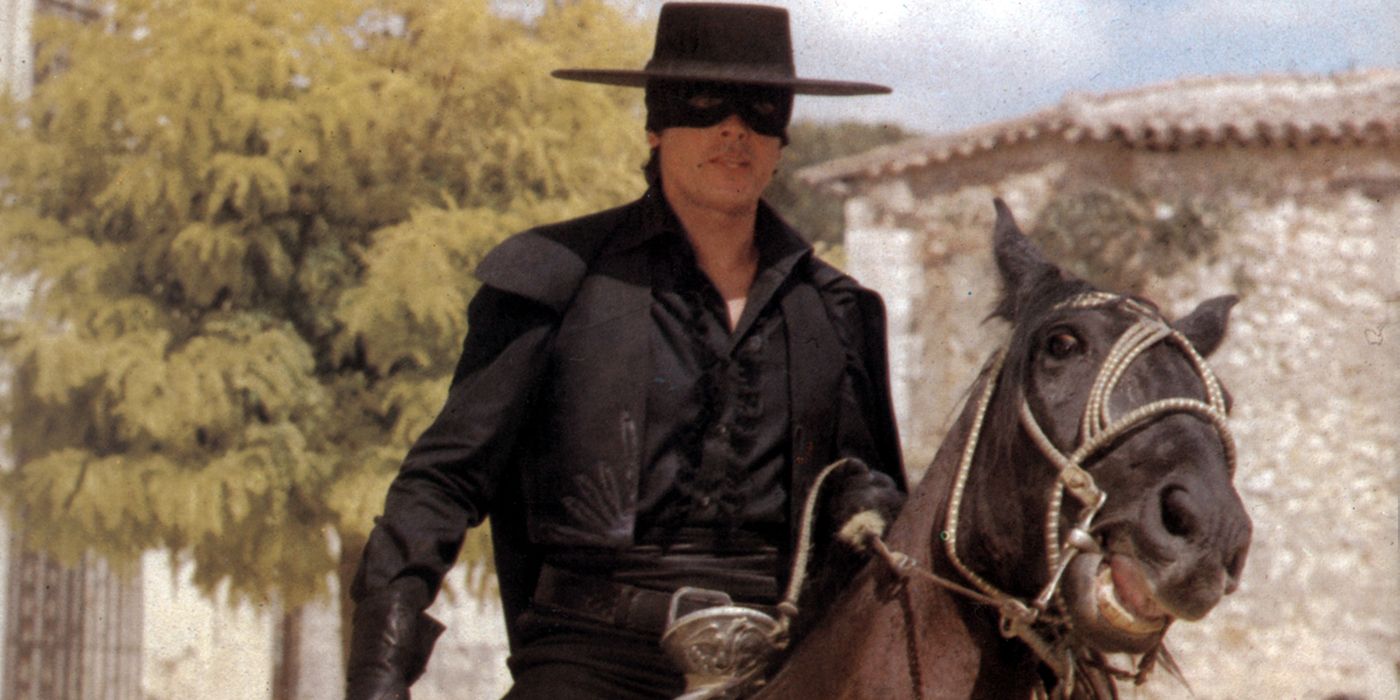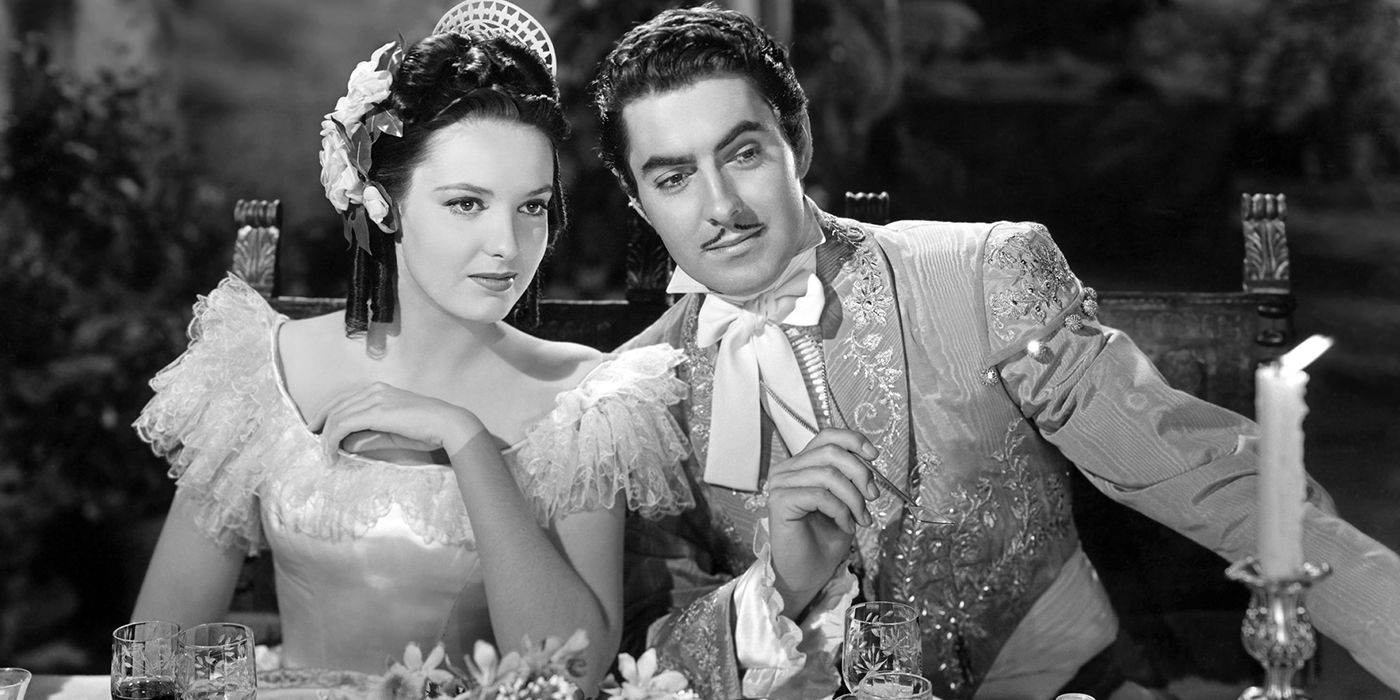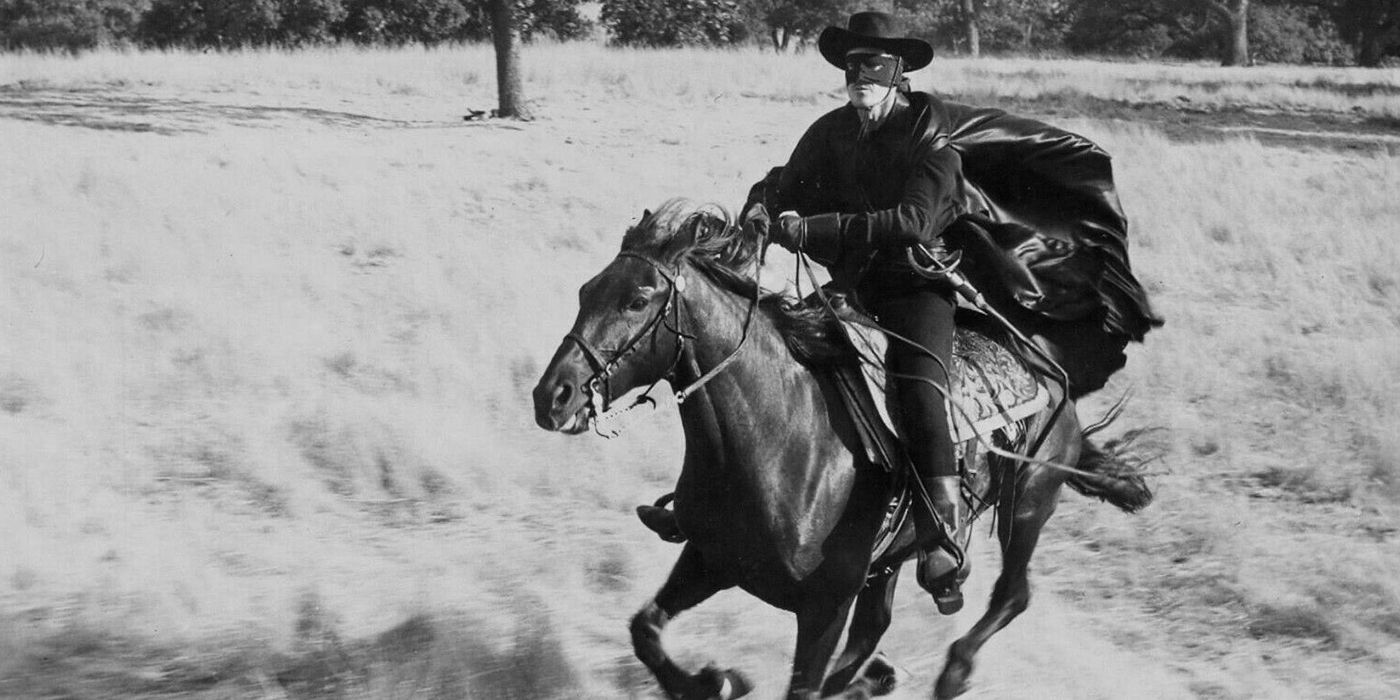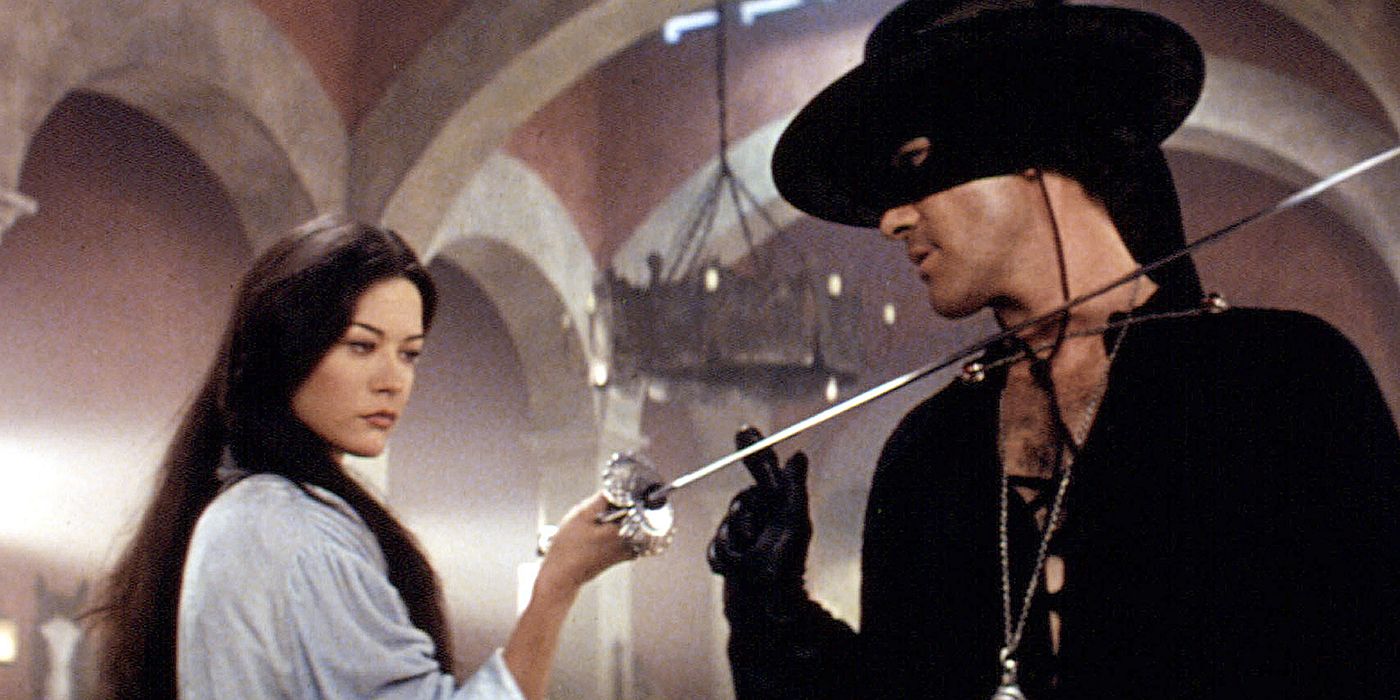Batman, Spider-Man, the X-Men, Power Rangers, Luke Skywalker – they all had a sizable presence in children’s entertainment of the 90s, inspiring their fair share of toys, games, and Halloween costumes. But the screen hero I remember spending the most time emulating as a kid was Zorro. My obsession ran so deep enough that, at one point, I had five different configurations of Zorro costumes to various film versions, and I even wore my best approximation of Anthony Hopkins’ young Diego de la Vega clothes while attending third grade.
The masked avenger of California has a more storied legacy than that, of course. From origins as a 1919 pulp fiction novel by Johnston McCulley, he became a seminal figure in the development of the adventure genre. Modern superheroes, particularly Batman, owe a large debt to Zorro (as do legions of fencing clubs). Movies and TV have turned to him as a reliable stock character; between the two mediums, there are over fifty adaptations, with more on the way. That’s quite the history to explore, but if you’d like a place to start, here are seven of the black fox’s best outings.
7. Zorro’s Fighting Legion (1939)
Did you enjoy that stunt from Raiders of the Lost Ark where Indy climbs down the front of a truck, passes underneath it, and comes up the other side? Before its use in Raiders, that stunt – well, it first appeared in the John Wayne vehicle Stagecoach. But its perfected execution was one of the highlights of Zorro’s Fighting Legion, the second of five movie serials made with the character by Republic Pictures.
Zorro’s Fighting Legion is the only one of the five set in the 1800s and starring Don Diego (Reed Hadley, sojourning in Mexico to help ensure the new republic’s stability before returning to California. The acting is often stiff, and the villains’ schemes of gold theft and misled tribes are as creaky and dated as they come, but the action set pieces like the Stagecoach stunt and a rousing musical score carry it all along. And dammit if those serial cliffhangers don’t still do the trick; I lost two hours of sleep from wanting to see how Zorro could possibly manage his way out of each peril.
6. Zorro (1990-1993)
The longest-lived Zorro TV series to date at 88 episodes, this international co-production hoped to bring Zorro back in a big way on The Family Channel (remember when Freeform was called that?) in the early 90s. It never made the same splash as Disney’s series from an earlier decade, and it, unfortunately, represented a step back for swordplay on the small screen; tight 90s TV schedules did fight choreographers no favors.
What New World Television’s Zorro brought to the character was an intellectual bent. Don Diego (Duncan Regehr) became a Renaissance man, applying a classical education in Spain to the detection of crimes and to expanding his mystique with such devices as a da Vinci-inspired glider. This scholarly bent to Diego gave the show an educational flavor that sometimes bordered on tedious, but it is on balance a pleasant offering of family-friendly (if cheesy) fun.
5. The Mark of Zorro (1920)
Time for a little heresy among classic film buffs: I don’t care for Douglas Fairbanks, Sr. His acting is all the overwrought hamminess that parodists think silent film acting was, played straight. Some of his films hold up, but his performances don’t – with one exception. The Mark of Zorro was Fairbanks’s transition from a comedy star to adventure icon, and his languid take on Diego gives the film a wonderful touch of humor. The swordplay is unremarkable, but Fairbanks’s athleticism in his escape stunts is still impressive.
This Mark of Zorro is also the only production, to my knowledge, that faithfully adapts McCulley’s original story, The Curse of Capistrano. The film was so successful that the novel was republished under its name, and Fairbanks went on to define the period adventure movie with follow-up swashbucklers throughout the 1920s. Among them was a sequel: Don Q, Son of Zorro (1925). In some ways, Don Q is the better movie; Fairbanks’s sword work certainly improved over five years, but we’re not here to discuss Zorro’s progeny, and the son’s advancements don’t make The Mark of Zorro any less of a good time.
4. Zorro (1975)
Many of the Zorro films were made in Europe during the heyday of the Spaghetti Westerns. Very few of them kept the fox as a defender of Spanish California, and the Italian/French co-production of Zorro (1975) was no exception; it sees Diego masquerading as his dead friend, the governor of the fictional South American colony of Nueva Aragón. But while many of these Spaghetti Swashbucklers were forgettable, Zorro is a first-rate adventure.
Alain Delon can be an unsettlingly intense actor, but he’s a delight here. As the foppish governor, he does even Fairbanks one better for comedy, while his Zorro exudes charisma and bravado. He crosses blades with the great Welsh character actor Stanley Baker, the latter delivering his final feature film role here as the brusque villain Colonel Huerta. The romance feels rather obligatory and the uncut version of the film sags with side plots at times, but Zorro demonstrates so much of what’s good about classic adventure films that it’s easy to forgive any shortcomings. Let easy prey for earworms beware, however: once you hear the theme song for this movie, you will never forget it, however desperately you want to.
3. The Mark of Zorro (1940)
The title and the character of Zorro are all this production has in common with the Fairbanks film. Almost nothing of Johnston McCulley can be found here either. But the 1940 Mark of Zorro is a brilliant movie and a subtly subversive take on the adventure genre. You couldn’t call this an action-adventure film. Zorro’s appearances in costume are almost all crammed into one small section of the story, and he never enters a proper sword fight in the mask. But after establishing Zorro’s reputation, Tyrone Power’s Diego uses his foppish persona to manipulate the fears of the bumbling alcalde (J. Edward Bromberg) about this new outlaw.
Power’s sly wordplay and Bromberg’s cowardly antics are hilarious to watch. The comedy is helped along by Gale Sondergaard’s lovably beastly turn as the alcalde’s wife and Montagu Love as Diego’s indignant father. But this is not a parody. Power’s Zorro is one of the few with a sinister air about him, even if it is an act, and his chemistry with Linda Darnell elevates what would be a perfunctory romance otherwise. What might best recommend The Mark of Zorro is the duel between Power as Diego with Basil Rathbone’s Esteban. For the fencers among you who easily get impatient with Hollywood’s notion of swordplay, this is a brilliant piece of fight choreography based around the saber – “magnified,” in the words of swordmaster Fred Cavens, “but correct.”
2. Zorro (1957-1959)
As he did with so many other characters, Walt Disney set the popular image of Zorro. It was in Disney’s series that the various elements developed across films, serials, and McCulley’s stories were synthesized for the first time. Zorro (Guy Williams, real name Armando Catalano) sported his signature outfit and dashing smile, while his front as Diego morphed from languid fop to earnest and studious but unathletic. His horse picked up the name Tornado and a clever personality. The mute Bernado (Gene Sheldon) graduated from undefined servant to quick-thinking friend and partner to Zorro, while Henry Calvin established the comic relief Sergeant Garcia as a fool with a core of decency.
Owing in no small part to Williams’s own skills as a fencer, Zorro boasts some wonderful swordplay and charming storytelling, including a rather elaborate story arc involving a plot to break California off from Spain into its own empire. Sadly cut short thanks to a dispute between Walt and ABC, this slice of 50s pop culture only ran two seasons – neither of them, to my ongoing frustration, available yet on Disney+.
1. The Mask of Zorro (1998)
In a way, it’s a shame that the best Zorro production to date is a “passing the torch” story marked by the death of Diego de la Vega. But there’s no denying that The Mask of Zorro has gorgeous production value, a strong script, and excellent direction by Martin Campbell. This is the movie that got me on the Zorro train. While I gravitated more towards Anthony Hopkins (he had the better Zorro costume), Antonio Banderas more than earned all the praise he’s won over the years as Alejandro Murieta, the new Zorro.
He and Catherine Zeta-Jones gave mainstream 90s cinema one of its most electrifying romantic chemistries, and their love affair in the film is one of the most well-handled in Zorro’s long history. There’s sincere pathos here too, giving the character some deeper meaning without becoming too precious about it. And, of course, no truly great Zorro film would be without truly great swordplay. If no one fight can match the Power-Rathbone duel of 1940, the film’s overall presentation of exciting and romantic bladework is without peer.

